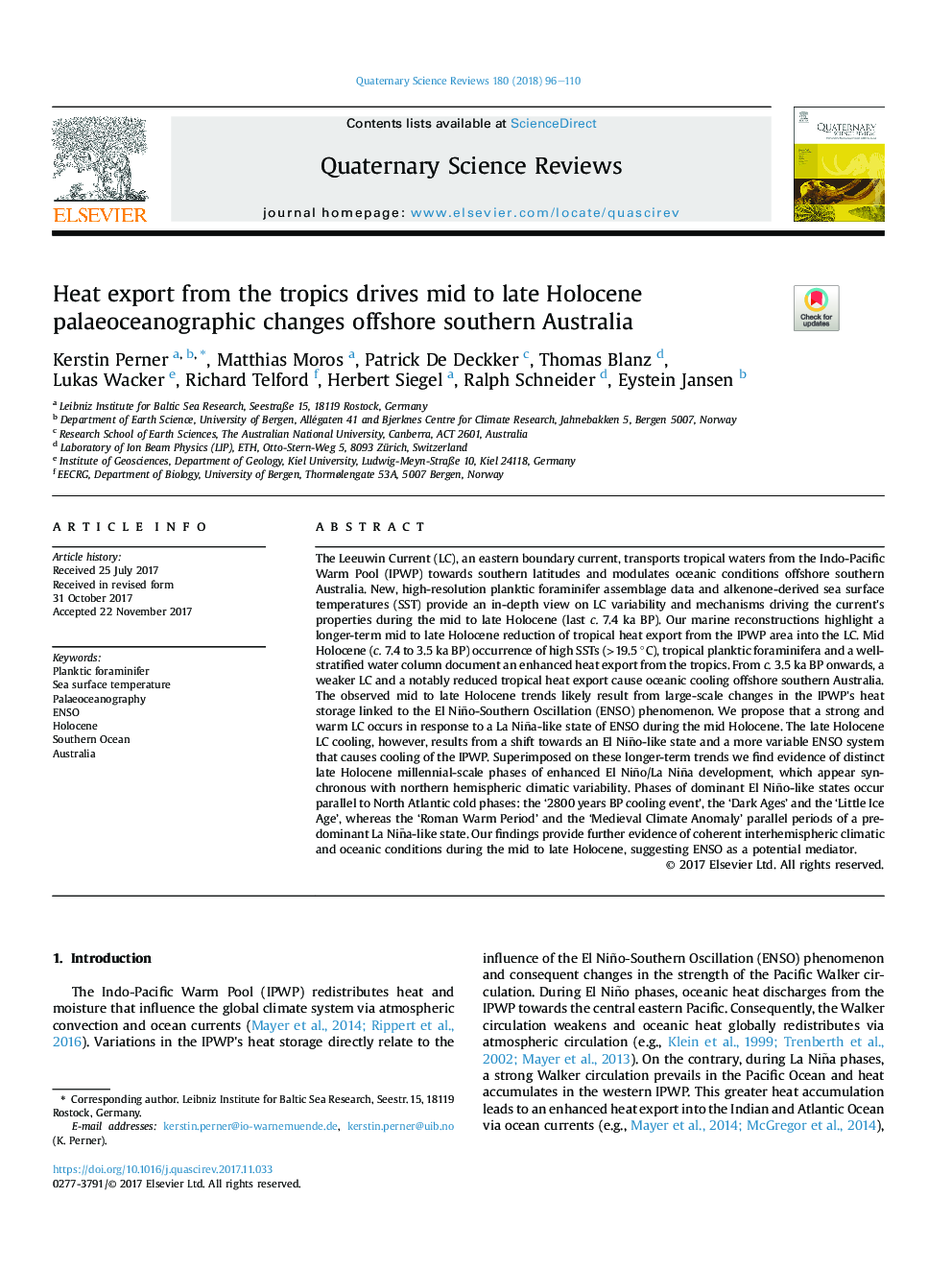| Article ID | Journal | Published Year | Pages | File Type |
|---|---|---|---|---|
| 8915030 | Quaternary Science Reviews | 2018 | 15 Pages |
Abstract
The Leeuwin Current (LC), an eastern boundary current, transports tropical waters from the Indo-Pacific Warm Pool (IPWP) towards southern latitudes and modulates oceanic conditions offshore southern Australia. New, high-resolution planktic foraminifer assemblage data and alkenone-derived sea surface temperatures (SST) provide an in-depth view on LC variability and mechanisms driving the current's properties during the mid to late Holocene (last c. 7.4 ka BP). Our marine reconstructions highlight a longer-term mid to late Holocene reduction of tropical heat export from the IPWP area into the LC. Mid Holocene (c. 7.4 to 3.5 ka BP) occurrence of high SSTs (>19.5 °C), tropical planktic foraminifera and a well-stratified water column document an enhanced heat export from the tropics. From c. 3.5 ka BP onwards, a weaker LC and a notably reduced tropical heat export cause oceanic cooling offshore southern Australia. The observed mid to late Holocene trends likely result from large-scale changes in the IPWP's heat storage linked to the El Niño-Southern Oscillation (ENSO) phenomenon. We propose that a strong and warm LC occurs in response to a La Niña-like state of ENSO during the mid Holocene. The late Holocene LC cooling, however, results from a shift towards an El Niño-like state and a more variable ENSO system that causes cooling of the IPWP. Superimposed on these longer-term trends we find evidence of distinct late Holocene millennial-scale phases of enhanced El Niño/La Niña development, which appear synchronous with northern hemispheric climatic variability. Phases of dominant El Niño-like states occur parallel to North Atlantic cold phases: the '2800 years BP cooling event', the 'Dark Ages' and the 'Little Ice Age', whereas the 'Roman Warm Period' and the 'Medieval Climate Anomaly' parallel periods of a predominant La Niña-like state. Our findings provide further evidence of coherent interhemispheric climatic and oceanic conditions during the mid to late Holocene, suggesting ENSO as a potential mediator.
Keywords
Related Topics
Physical Sciences and Engineering
Earth and Planetary Sciences
Geology
Authors
Kerstin Perner, Matthias Moros, Patrick De Deckker, Thomas Blanz, Lukas Wacker, Richard Telford, Herbert Siegel, Ralph Schneider, Eystein Jansen,
